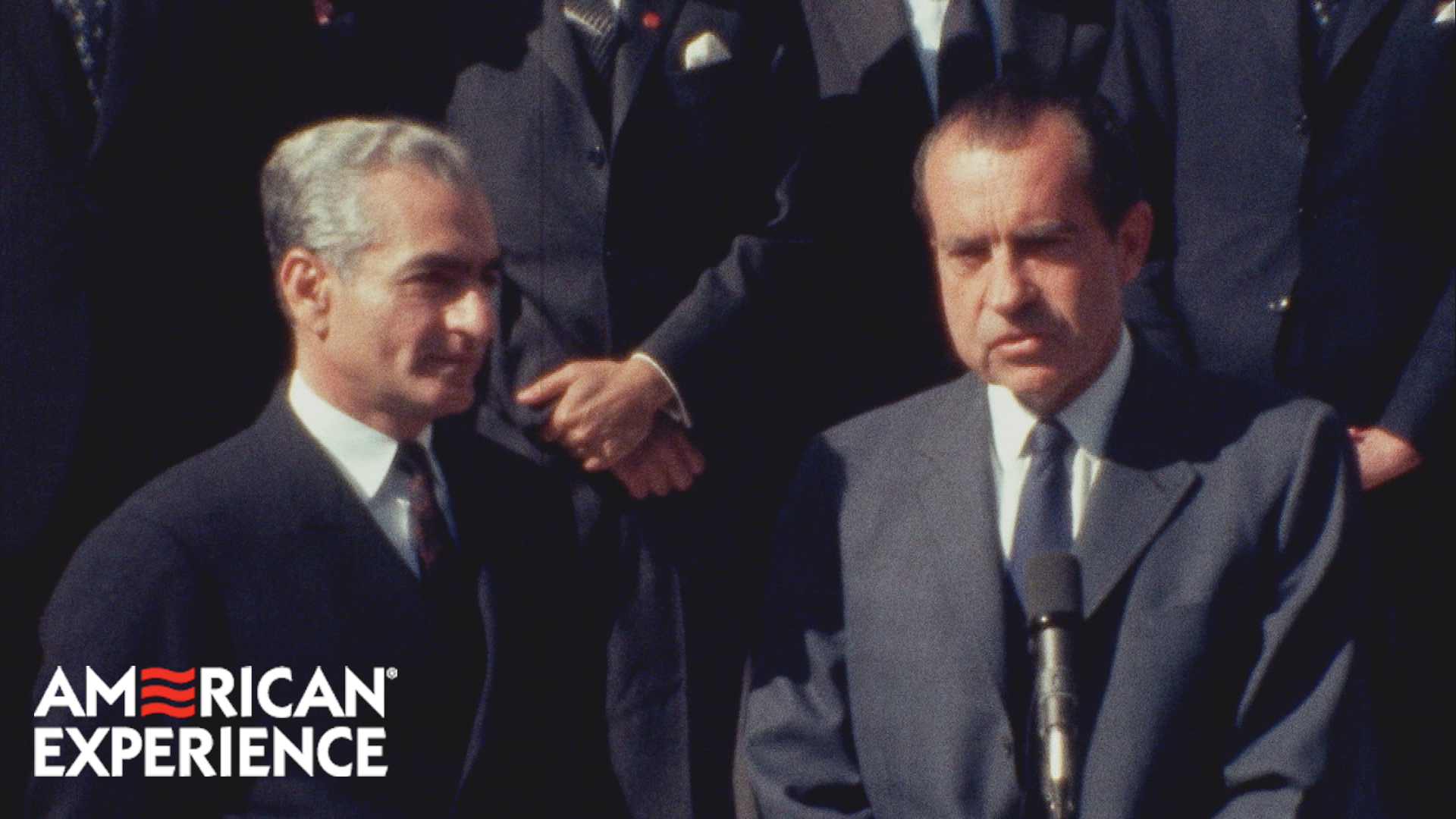Iran's Power Vacuum: Who Ruled After The Shah Left?
The departure of Shah Mohammad Reza Pahlavi from Iran on January 16, 1979, marked a pivotal moment in modern history, leaving a profound question lingering in the air: after the Shah left Iran, who was in charge? This event was not merely a change of leadership but the culmination of years of simmering discontent, ultimately igniting the Iranian Revolution and reshaping the geopolitical landscape of the Middle East. The power vacuum created by the Shah's exile set the stage for a dramatic and rapid transformation of the nation, from a monarchy to an Islamic Republic.
Understanding the immediate aftermath and the subsequent power dynamics requires a closer look at the key figures and the chaotic yet decisive events that unfolded in early 1979. From a caretaker government to the triumphant return of a religious leader, Iran experienced a tumultuous period that redefined its identity and its relationship with the world. This article delves into the intricate details of who held the reins of power, even if momentarily, and how the ultimate authority was consolidated in the hands of a figure who would change Iran forever.
Table of Contents
- The Shah's Final Days and Departure
- The Brief Reign of Shapour Bakhtiar
- Ayatollah Khomeini's Return and Ascension to Power
- The Islamic Revolution Takes Hold
- International Repercussions: The US Hostage Crisis
- The Legacy of the Iranian Revolution
- Understanding the Shift in Power
The Shah's Final Days and Departure
Mohammad Reza Pahlavi, the Shah of Iran, had ruled since September 16, 1941. His reign, spanning nearly four decades, was characterized by ambitious modernization programs, close ties with Western powers, particularly the United States, and increasingly, by political repression. The 1950s, 1960s, and 1970s saw significant economic growth and social changes in Iran under his leadership. However, this progress often came at the cost of political freedoms, with dissent harshly suppressed by his secret police, SAVAK. The Shah's opulent lifestyle, perceived corruption, and his attempts to Westernize a deeply religious society fueled widespread resentment among various segments of the population, including the clergy, intellectuals, and the working class.
By the late 1970s, the discontent reached a boiling point. Mass protests, strikes, and civil unrest became commonplace, challenging the very foundation of his rule. The atmosphere on the streets was one of growing panic and revolutionary fervor. The "Data Kalimat" notes "Panic on the streets of Tehran," vividly capturing the intense public sentiment. The United States, which had continued to support the Shah's government after WWII, found itself in a difficult position as the revolution gained momentum. Despite initial unwavering support, the US eventually began to signal a shift, a move that privately embittered the Shah, who felt that the United States no longer wanted him in power.
A Monarch Under Siege
The pressure on the Shah became unbearable. Forty years ago, Iran's ruling Shah faced an insurmountable wave of opposition. On the morning of January 16, 1979, a tearful Shah Mohammad Reza Pahlavi and his family walked on the tarmac at Mehrabad Airport in Tehran, Iran, to board a plane to leave the country. This 1979 file photo captures the poignant moment of his departure. He abandoned his peacock throne and left his nation, never to return home, setting the stage for the country's 1979 Islamic Revolution a month later. His departure and the ensuing chaos blindsided the United States, which had largely underestimated the depth and breadth of the revolutionary movement. This moment directly led to the question: after the Shah left Iran, who was in charge?
The Brief Reign of Shapour Bakhtiar
Immediately after Shah Mohammad Reza Pahlavi left on January 16, 1979, control of the government fell to his prime minister, Shahpour Bakhtiar. Bakhtiar had been officially appointed prime minister on the very morning of the Shah's departure. His appointment was a desperate, last-ditch effort by the Shah to create a transitional government that might appease the revolutionaries and prevent the complete collapse of the monarchy. Bakhtiar was a former opposition figure, a member of the National Front, who had been imprisoned by the Shah himself. This made his appointment controversial, as many in the opposition viewed him as a traitor for agreeing to work with the monarchical system he had once opposed.
Bakhtiar's government continued to rule until February 11, 1979. During his brief tenure, he attempted to implement reforms, release political prisoners, and dismantle SAVAK, hoping to gain public trust and halt the revolutionary tide. He sought to negotiate with the revolutionary forces, particularly with Ayatollah Ruhollah Khomeini, who was still in exile in France at this point. However, his efforts were largely futile. The revolutionary movement, galvanized by Khomeini's directives from afar, saw Bakhtiar's government as merely a continuation of the old regime, albeit with a new face. The people's demand was for fundamental change, not just a reshuffling of the existing power structure.
A Desperate Attempt at Transition
Bakhtiar faced an impossible task. He lacked the legitimacy in the eyes of the revolutionaries, and the military, though still nominally loyal to the state, was increasingly fractured and demoralized. The true power on the streets lay with the revolutionary committees and the vast network of mosques and religious institutions loyal to Ayatollah Khomeini. Despite his efforts, Bakhtiar could not stem the tide of the revolution. His authority was continuously undermined by Khomeini's pronouncements, which called for his resignation and the establishment of an Islamic government. The question of who was in charge after the Shah left Iran was quickly being answered by the popular will, which overwhelmingly favored Khomeini. Bakhtiar's government effectively collapsed with the return of Khomeini and the subsequent declaration of an Islamic Republic.
Ayatollah Khomeini's Return and Ascension to Power
The definitive answer to the question of who was in charge after the Shah left Iran came with the return of Ayatollah Ruhollah Khomeini. Having been exiled for over 14 years, first to Turkey and then to Iraq, and finally to France, Khomeini became the spiritual and political leader of the Iranian Revolution. His messages, distributed through cassette tapes and a vast network of religious students and followers, resonated deeply with the Iranian populace, who saw him as a figure of purity and resistance against the Shah's perceived tyranny and Western influence.
On February 1, 1979, less than three weeks after the Shah's departure, Ayatollah Ruhollah Khomeini flew back from France to a rapturous welcome in Tehran. Millions poured into the streets to greet him, an unprecedented display of popular support. His arrival effectively sealed the fate of Bakhtiar's government. Khomeini immediately declared his intention to establish an Islamic government and appointed his own provisional government, challenging Bakhtiar's authority directly. The dual power structure could not last.
The Triumph of the Revolution
The final showdown between Bakhtiar's government and Khomeini's revolutionary forces occurred in the days following Khomeini's return. On February 11, 1979, the military, which had been wavering in its loyalty, declared its neutrality, effectively withdrawing support from Bakhtiar. This signaled the definitive end of the monarchical system and Bakhtiar's brief rule. Ayatollah Ruhollah Khomeini then assumed power as the supreme leader of Iran. It was October 1979, a full eight months after Shah Mohammad Reza Pahlavi had fled the Iranian Revolution, leaving Ayatollah Ruhollah Khomeini to fly back from France and assume power as the ultimate authority. This marked the official establishment of the Islamic Republic of Iran, a system based on the principle of Velayat-e Faqih, or the Guardianship of the Islamic Jurist, with Khomeini at its helm.
The Islamic Revolution Takes Hold
With Ayatollah Khomeini firmly in charge, Iran embarked on a radical transformation. The vestiges of the Shah's caretaker government were completely overthrown. The new Islamic government swiftly moved to dismantle the old institutions and establish new ones based on Islamic principles. This included the formation of the Islamic Revolutionary Guard Corps (IRGC) to protect the revolution, the establishment of revolutionary courts, and the implementation of strict Islamic laws and dress codes. The atmosphere on the streets, initially one of revolutionary fervor and triumph, soon shifted to one of intense ideological restructuring.
The revolution's success in 1979 was the culmination of decades of grievances. The Shah's close ties with the US, his perceived authoritarianism, and his modernization efforts that clashed with traditional values all contributed to the widespread desire for change. The new regime quickly distanced itself from the West, particularly the United States, which it branded as the "Great Satan" due to its historical support for the Shah. This hostility was not merely rhetorical; it soon manifested in concrete actions that would have profound international consequences.
International Repercussions: The US Hostage Crisis
One of the most significant and immediate international repercussions of the revolution and the answer to who was in charge after the Shah left Iran was the Iran Hostage Crisis. This event directly stemmed from the deep-seated animosity towards the United States. All were reasons the Iranian government was hostile to the US after the Shah left the country, except America's close ties with Iraq. In retribution for Carter's granting asylum to the ailing Shah of Iran in 1979, an angry crowd broke into the US Embassy in Tehran and took more than 60 American hostages. This act, which began on November 4, 1979, and lasted for 444 days, plunged US-Iran relations into a deep freeze from which they have never fully recovered.
The hostage crisis underscored the revolutionary government's determination to assert its independence and defy Western influence. It also served as a powerful symbol of the new regime's anti-imperialist stance. The crisis had a profound impact on American foreign policy and domestic politics, contributing to President Jimmy Carter's defeat in the 1980 election. The event solidified the image of Iran as a revolutionary state, willing to challenge international norms to achieve its objectives.
The Legacy of the Iranian Revolution
The Iranian Revolution, and the subsequent consolidation of power by Ayatollah Khomeini, had a lasting legacy both domestically and internationally. Domestically, it transformed Iran into a unique political system, a theocratic republic, where religious authority holds ultimate sway over political decisions. The revolution brought about significant social changes, including the imposition of Islamic laws, but also empowered previously marginalized segments of society. The question of who was in charge after the Shah left Iran was answered by a complete paradigm shift in governance.
Internationally, the revolution inspired Islamic movements across the globe and challenged the traditional order of the Middle East. It demonstrated that a popular, religiously-driven movement could successfully overthrow a seemingly entrenched, Western-backed monarchy. The new Iranian government became a vocal critic of US foreign policy in the region and a staunch supporter of various proxy groups, leading to ongoing tensions and conflicts. The Shah, who died just a year later in Egypt, remained a symbol of the old order, while Khomeini's revolution ushered in a new era of Islamic political power.
Understanding the Shift in Power
To fully grasp the dynamics of who was in charge after the Shah left Iran, it's crucial to understand the swift and decisive nature of the power transfer.
- January 16, 1979: Shah Mohammad Reza Pahlavi departs Iran. Simultaneously, Prime Minister Shahpour Bakhtiar is officially appointed and takes control of the government.
- February 1, 1979: Ayatollah Ruhollah Khomeini returns to Iran from exile, immediately challenging Bakhtiar's legitimacy.
- February 11, 1979: Bakhtiar's government collapses as the military declares neutrality, effectively handing power to the revolutionary forces. Ayatollah Ruhollah Khomeini assumes ultimate authority.
- October 1979: Khomeini's leadership is fully consolidated, and the Islamic Republic of Iran is established, with him as the supreme leader.
This timeline clearly illustrates that while Bakhtiar held nominal power for a brief period, the real authority, fueled by popular support and revolutionary momentum, quickly gravitated towards Ayatollah Khomeini. The transition was not a smooth handover but a revolutionary overthrow, replacing one form of governance with another entirely. The question "After the Shah left Iran, who was in charge?" therefore has a layered answer: initially a caretaker Prime Minister, but definitively, and within a matter of weeks, Ayatollah Ruhollah Khomeini.
Who Was In Charge After The Shah Left Iran?
The question of who was in charge after the Shah left Iran is critical to understanding the genesis of the Islamic Republic. It was not a simple succession but a complex power struggle that unfolded rapidly. While Shahpour Bakhtiar was the appointed Prime Minister, holding the official reins of government from January 16, 1979, until February 11, 1979, his authority was quickly overshadowed. The true power, the popular mandate, and the ultimate control of the nation transitioned to Ayatollah Ruhollah Khomeini. Khomeini's return from exile on February 1, 1979, ignited the final phase of the revolution, leading to the collapse of Bakhtiar's government and Khomeini's assumption of supreme power by February 11, 1979. Therefore, while Bakhtiar was technically in charge for a few weeks, the effective and revolutionary power was swiftly consolidated by Ayatollah Khomeini, who then established the Islamic Republic.
Conclusion
The departure of Shah Mohammad Reza Pahlavi in January 1979 left Iran in a state of flux, prompting the crucial question: after the Shah left Iran, who was in charge? As we've explored, the immediate answer was Prime Minister Shahpour Bakhtiar, who attempted to maintain control in a rapidly deteriorating situation. However, his authority was fleeting, quickly eclipsed by the overwhelming popular support for Ayatollah Ruhollah Khomeini. Khomeini's triumphant return from exile less than three weeks after the Shah's departure marked the true transfer of power, culminating in the complete overthrow of the monarchy and the establishment of the Islamic Republic of Iran by February 11, 1979.
This period of intense political transition fundamentally reshaped Iran, leading to profound domestic changes and significant international repercussions, including the infamous US Embassy hostage crisis. The Iranian Revolution stands as a testament to the power of popular will and religious leadership in overturning an established regime. Understanding this pivotal moment is essential for comprehending modern Iranian history and its ongoing impact on global affairs. We encourage you to share your thoughts in the comments below or explore other articles on our site for more historical insights.

U.S. Support for the Shah of Iran: Pros and Cons | Taken Hostage | PBS

Shah of Iran modernized his nation but vacillated in crisis : iran

233 best Shah Of Iran images on Pholder | Iran, History Porn and Iranian